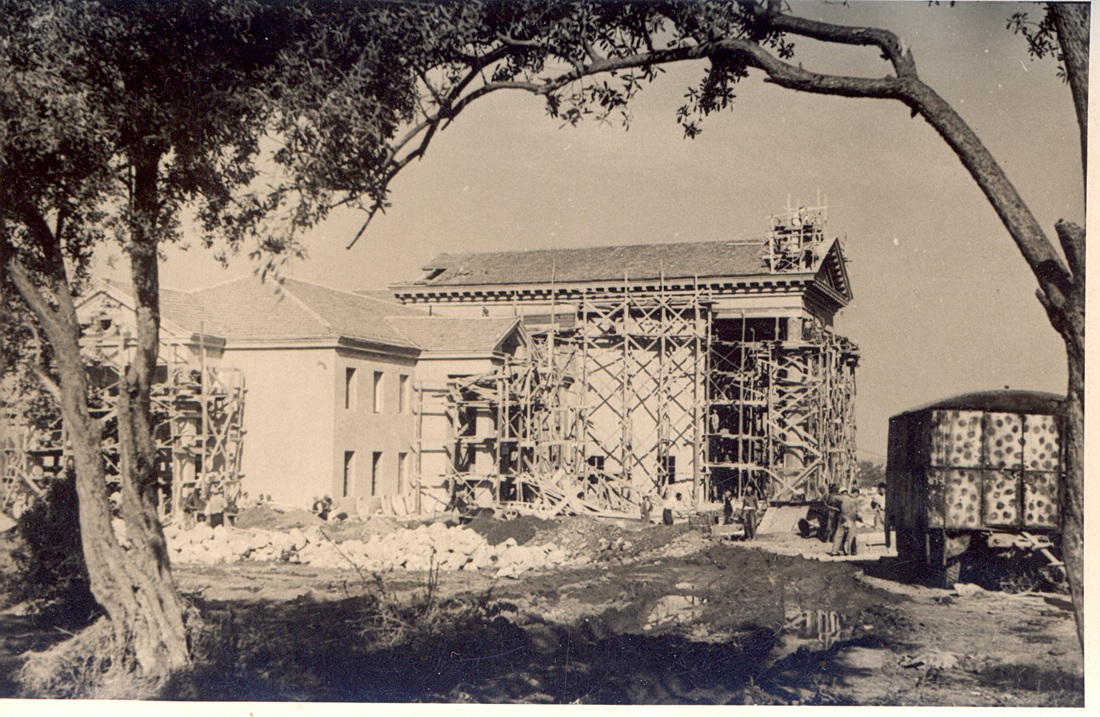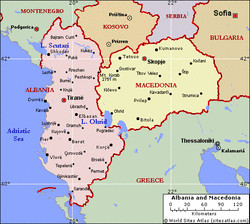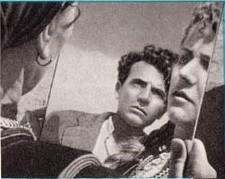|
The Kinostudio Shqipëria e Re, in Tirana, Albania, founded in 1952 by the dictator Enver Hoxha with the initial support of the Soviet Union. This building once housed Albania’s national film studios and their national film archives. Today, it is home to the Albanian National Center of Cinematography, the Marubi Academy of Film and Multimedia and several Albanian TV studios. POLITICAL AND FILM HISTORY INTERSECT
More than twenty years have passed since the fall of Hoxha’s regime, yet there is still much resistance to a re-examination of Albania’s state sponsored film productions. For this reason, many have languished in inadequate vaults and are now in danger of being lost forever. The Albanian Cinema Project is working to preserve and restore these films and to open up an international public dialogue that will encourage Albanians and others to view these films in a different light. AN OVERVIEW OF ALBANIAN FILM HISTORY
In 1920, the Perparimi (Progress) Theater opened in the southern port city of Vlore, followed by cinemas in Shkodra, Berat and the capital city of Tirana. By the time the Italian fascists invaded Albania, there were 18 movie theaters in the country. During the Italian occupation, there were several attempts to start a film industry. Before the Germans took over in 1943, a young cineaste, Mihallaq Mone (1917-1984) shot several documentary shorts and even attempted to direct the country’s first feature– TAKIM NE LIQEN (Meeting at the Lake)– with the leading star of Romanian film, the Albanian actor Kristaq Antoniu. With the communist takeover in 1944, Enver Hoxha, under Soviet and Yugoslav guidance, quickly realized the power of film as a propaganda tool. The first Albanian documentary, KOMANDANTI VIZITON SHQIPERINE E MESME DHE TE JUGUT (The Commander Visits Central and Southern Albania) chronicled the dictator’s travels through the country. The Albanian film industry finally got underway on July 10, 1952 with the inauguration of the Soviet-built ‘New Albania’ film studio complex (Kinostudio) on the outskirts of Tirana. At this time, students were sent to Czechoslovakia and the Soviet Union to begin their filmmaking studies, among them the future directors Dhimiter Anagnosti, Viktor Gjika and Piro Milkani. The first ‘New Albania’ fiction feature was a co-production with the Soviet Union, SCANDERBEG (1953), an epic about the 14th century warrior who held off the Turkish occupation until his death. Directed by the Russian Sergei Yutkevich and featuring Albanian actors, the film showcased several astonishing battle sequences and went on to win the International Prize at the 1954 Cannes film festival. A notable period in Albanian filmmaking followed, with the first entirely homegrown production, Kristaq Dhamo’s TANA (1958) and continued through the next decade with Hysen Hakani’s moving DEBATIK (1961) and TOKE JONE (Our Land, 1964). In 1967, the partisan drama NGADHNJIM MBI VDEKJEN (Triumph Over Death), co-directed by Gezim Erebara and Piro Milkani, introduced the leading actors Timo Flloko and Rikard Ljarja to the big screen. With Albania’s break from the Soviet Union and subsequent expulsion from the East bloc, the country entered into an alliance with Maoist China. Bypassing the revolution occurring in world cinema, Albanian motion pictures became a propaganda tool bereft of stylistic innovation. However, some films were successfully produced outside the tight strictures of the regime, most notably Muharrem Fejzo and Fehmi Hoshafi’s uproarious comedy KAPEDANI (Captain, 1972), Anagnosti’s LULEKUQET MBI MURE (Red Poppies on the Wall, 1976) and Rikard Ljarja’s SKETERRE 43 (Hell 43,1980), but they were the exceptions to the rule. Surprisingly, for a country isolated from much of the world, Albania produced an average of thirteen movies a year between 1975 and 1990. Since owning a television was still a luxury for Albanians, cinema attendance averaged around 20,000,000 seats sold in 450 indoor and outdoor theaters annually. This means that every inhabitant of the country attended ten films a year. From the time of TANA (1958) until 1995, 270 feature films, 700 documentaries and 150 animated films were produced in Albania. A fortunate outcome of the closed regime of Enver Hoxha is that the film archives managed to keep track of nearly all of the features, shorts, documentaries, newsreels and animated films produced in Albania since 1952. The archives also holds film stills, posters, press books, screenplays, continuity scripts, musical scores and many other production elements that are often lost in more dispersed collections. This is also another reason why the move to more sound storage facility is essential to saving these important documents of Albanian cinema. The two decades of transition since the 1991 collapse of the communist system have been difficult for Albanian cinema. Though the former ‘New Albania’ became the Albafilm Studios, production was reduced to a trickle by the 1990’s, with an average of one or two films produced annually. In 1996 The National Center for Cinematography(QKK), sometimes referred to as the National Film Center, which was created by the Albanian government and decreed according to the “Law on Cinematography nr. 8096, datë 29.04.1996, article 3,” also took up residence in the former Kinostudio Despite this difficult transition, several talented filmmakers have emerged eager to give voice to the Albanian experience, among them Fatmir Koci (TIRANA YEAR ZERO, NEKROLOGJI), Gjergj Xhuvani (SLOGANS, DEAR ENEMY) and Bujar Alimani (GAS, AMNESTIA). http://www.thealbaniancinemaproject.org/albanian-history.html
|



